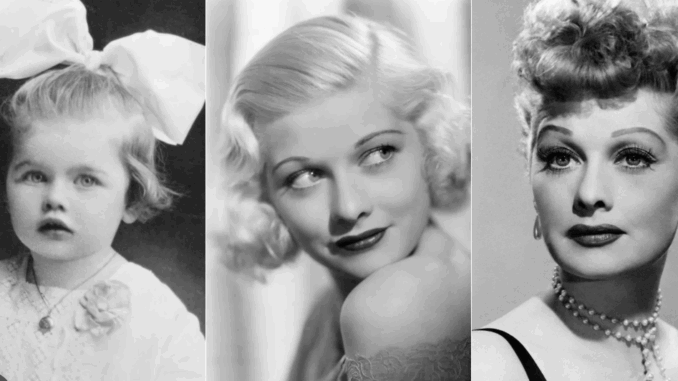
It’s a “what if” scenario that could have fundamentally altered the landscape of television: What if Lucille Ball hadn’t been rejected by Hollywood? In a twist of fate that proved to be a monumental blessing in disguise, a series of career setbacks in the film industry directly led to the creation of one of the most iconic and groundbreaking sitcoms of all time, I Love Lucy. Had Ball’s big screen ambitions been fully realized, the world might never have known the zany brilliance of Lucy Ricardo.
From Silver Screen Aspirations to Television Pioneer
Before she became the undisputed “Queen of Comedy” on television, Lucille Ball was a working actress in Hollywood, primarily known for her roles in B-movies at RKO Pictures. While she was undeniably talented and had a knack for physical comedy, she never quite achieved the A-list stardom she sought in films. By the late 1940s, as her movie career began to wane, a new medium was emerging: television.
CBS approached Ball with an offer to adapt her popular radio show, My Favorite Husband, for the small screen. Initially, Ball was hesitant. Like many film stars of the era, she viewed television as a lesser, fleeting medium. However, with her movie career stagnating and the promise of a steady income, she eventually agreed. This pivotal shift from film to television would prove to be the most significant decision of her career.
The Audacious Demand: Desi Arnaz by Her Side
Once committed to television, Ball made a demand that was considered radical at the time: she insisted that her real-life husband, Cuban bandleader Desi Arnaz, play her on-screen spouse. Studio executives were vehemently opposed to this idea. They worried about Arnaz’s Cuban accent and his relative unfamiliarity to American audiences. They even suggested more established American actors for the role.
But Ball was resolute. She knew the chemistry between her and Arnaz was undeniable, both personally and professionally. Their successful radio show had already proven their comedic dynamic. To demonstrate their on-screen appeal, Ball and Arnaz famously produced a pilot episode independently, financed by their own production company, Desilu Productions. This bold move was a direct challenge to the traditional studio system and ultimately convinced CBS to greenlight the show with Arnaz as her co-star.
How Hollywood’s Rejection Forged a Sitcom Revolution
The path to I Love Lucy was paved with numerous “nos” from the film industry. The refusal to cast Ball in more prominent, star-making roles in movies indirectly pushed her towards television. Had she found consistent success in Hollywood, it’s highly probable she would have remained in film, never venturing into the burgeoning world of TV.
This rejection, combined with Ball’s audacious demand for her husband to be her co-star, set the stage for a sitcom revolution. Desilu Productions pioneered many techniques that became industry standards, including the use of multiple cameras (which allowed for a live studio audience and efficient shooting), the practice of filming on 35mm film (ensuring high quality for reruns), and the groundbreaking concept of syndication. Because Ball and Arnaz owned the rights to their show through Desilu, they were able to profit immensely from reruns, a model that revolutionized television economics.

The creative freedom that came with owning their production company, born out of their independent spirit and the initial pushback from Hollywood, allowed them to experiment and innovate. The result was a show that was not only incredibly funny but also technically advanced and culturally impactful. I Love Lucy broke barriers with its portrayal of an interracial couple and its emphasis on female physical comedy, all while setting the standard for the modern sitcom.
In retrospect, Lucille Ball’s rejections from the silver screen weren’t failures; they were pivotal detours that led her to her true calling and, in doing so, gifted the world a television icon and a blueprint for comedic success that endures to this day.
